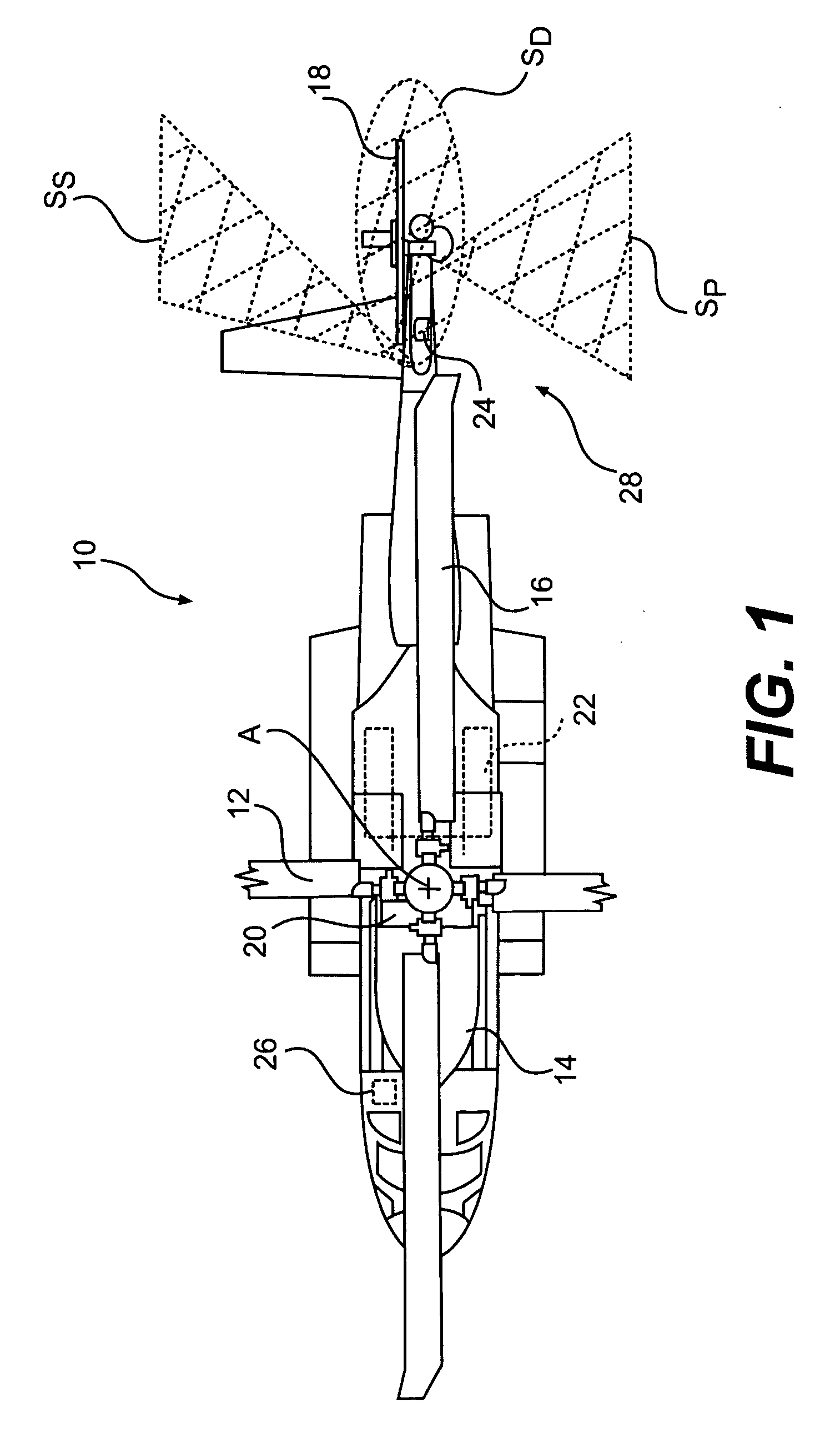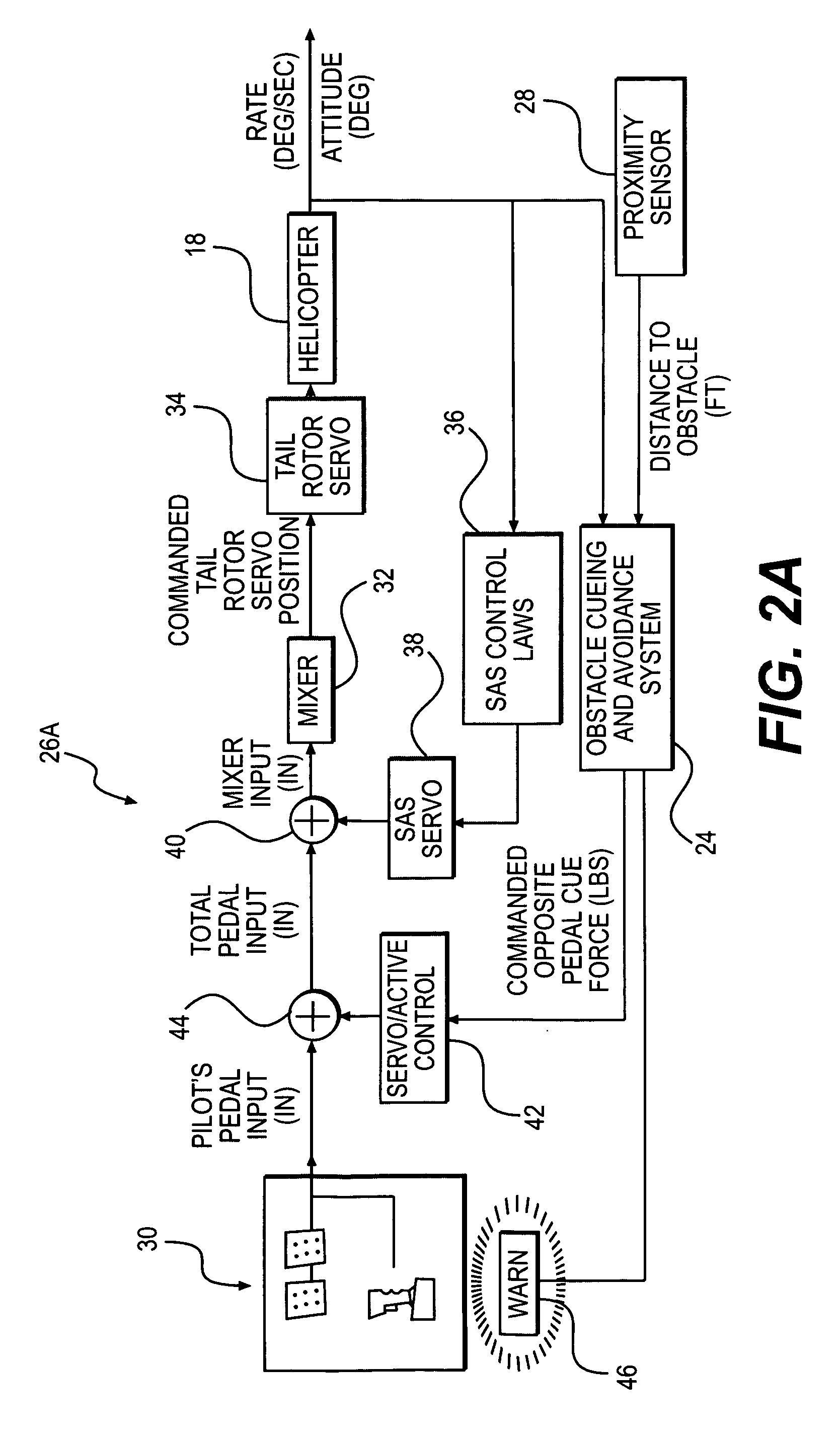Rotary wing aircraft flight control system with a proximity cueing and avoidance system
- Summary
- Abstract
- Description
- Claims
- Application Information
AI Technical Summary
Benefits of technology
Problems solved by technology
Method used
Image
Examples
Embodiment Construction
[0020] Although the present invention will be described in terms of an obstacle avoidance system for use with a rotary wing aircraft in order to minimize the likelihood of contact between the aircraft, specifically the tail of the rotary wing aircraft, and a nearby obstacle, the present invention is easily adaptable to prevent contact between a nearby obstacle and any other portion of the aircraft, for example, the fuselage, main rotor system, tail rotor system, etc. It should be further understood that the present invention is also easily adaptable for use with other apparatuses, structures, etc. where avoidance of contact with a nearby obstacle is desired.
[0021] The present invention is directed to an obstacle avoidance system. Preferably, as will be described in greater detail below, the obstacle avoidance system includes an input control device, which may be in the form, for example, of anti-torque pedals, a flight control stick, etc. The input control device being operable to ...
PUM
 Login to View More
Login to View More Abstract
Description
Claims
Application Information
 Login to View More
Login to View More - R&D
- Intellectual Property
- Life Sciences
- Materials
- Tech Scout
- Unparalleled Data Quality
- Higher Quality Content
- 60% Fewer Hallucinations
Browse by: Latest US Patents, China's latest patents, Technical Efficacy Thesaurus, Application Domain, Technology Topic, Popular Technical Reports.
© 2025 PatSnap. All rights reserved.Legal|Privacy policy|Modern Slavery Act Transparency Statement|Sitemap|About US| Contact US: help@patsnap.com



